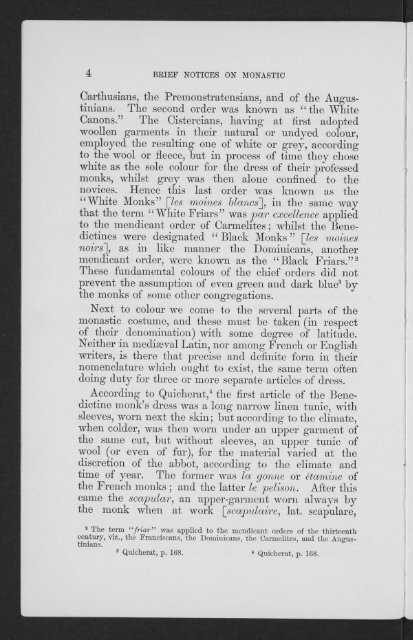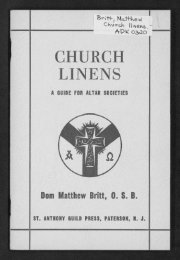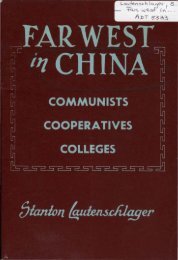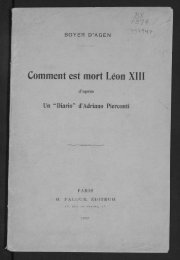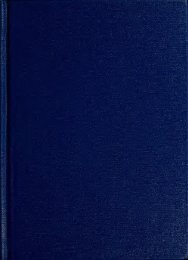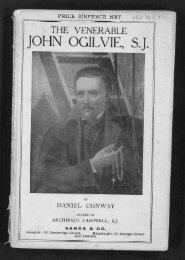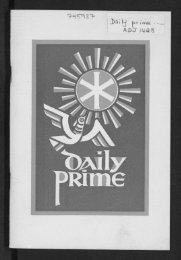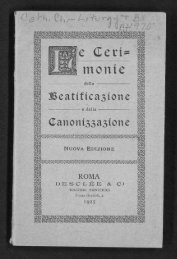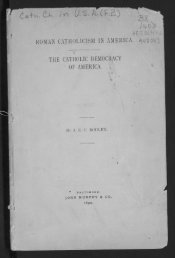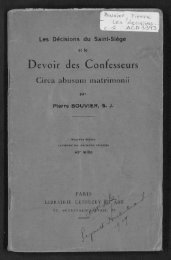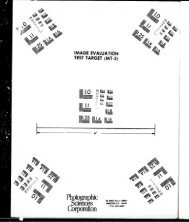MONASTIC AND ECCLESIASTICAL. COSTUME.
MONASTIC AND ECCLESIASTICAL. COSTUME.
MONASTIC AND ECCLESIASTICAL. COSTUME.
You also want an ePaper? Increase the reach of your titles
YUMPU automatically turns print PDFs into web optimized ePapers that Google loves.
4 BBIEF NOTICES ON <strong>MONASTIC</strong><br />
Carthusians, the Premonstratensians, and of the Augustinians.-<br />
The second order was known as "the White<br />
Canons." The Cistercians, having at first adopted<br />
woollen garments in their natural or undyed colour,<br />
employed the resulting one of white or grey, according<br />
to the wool or fleece, but in process of time they chose<br />
white as the sole colour for the dress of their professed<br />
monks, whilst grey was then alone confined to the<br />
novices. Hence this last order was known as the<br />
"White Monks" [les moines Manes'], in the same way<br />
that the term "White Friars" was par excellence applied<br />
to the mendicant order of Carmelites; whilst the Benedictines<br />
were designated " Black Monks" [les moines<br />
noirsl, as in like manner the Dominicans, another<br />
mendicant order, were known as the "Black Friars." 2<br />
These fundamental colours of the chief orders did not<br />
prevent the assumption of even green and dark blue3 by<br />
the monks of some other congregations.<br />
Next to colour we come to the several parts of the<br />
monastic costume, and these must be taken (in respect<br />
of their denomination) with some degree of latitude.<br />
Neither in mediaeval Latin, nor among French or English<br />
writers, is there that precise and definite form in their<br />
nomenclature which ought to exist, the same term often<br />
doing duty for three or more separate articles of dress.<br />
According to Quicherat, 4 the first article of the Benedictine<br />
monk's dress was a long narrow linen tunic, with<br />
sleeves, worn next the skin; but according to the climate,<br />
when colder, was then worn under an upper garment of<br />
the same cut, but without sleeves, an upper tunic of<br />
wool (or even of far), for the material varied at the<br />
discretion of the abbot, according to the climate and<br />
time of year. The former was la gonne or etamine of<br />
the French monks ; and the latter le pelison. After this<br />
came the scapular, an upper-garment worn always by<br />
the monk when at work [scapulaire, lat. scapulare,<br />
a The term "friar" was applied to the mendicant orders of the thirteenth<br />
century, viz., the Franciscans, the Dominicans, the Carmelites, and the Augustinians.<br />
» Quicherat, p. 168. 4 Quicherat, p. 168.


